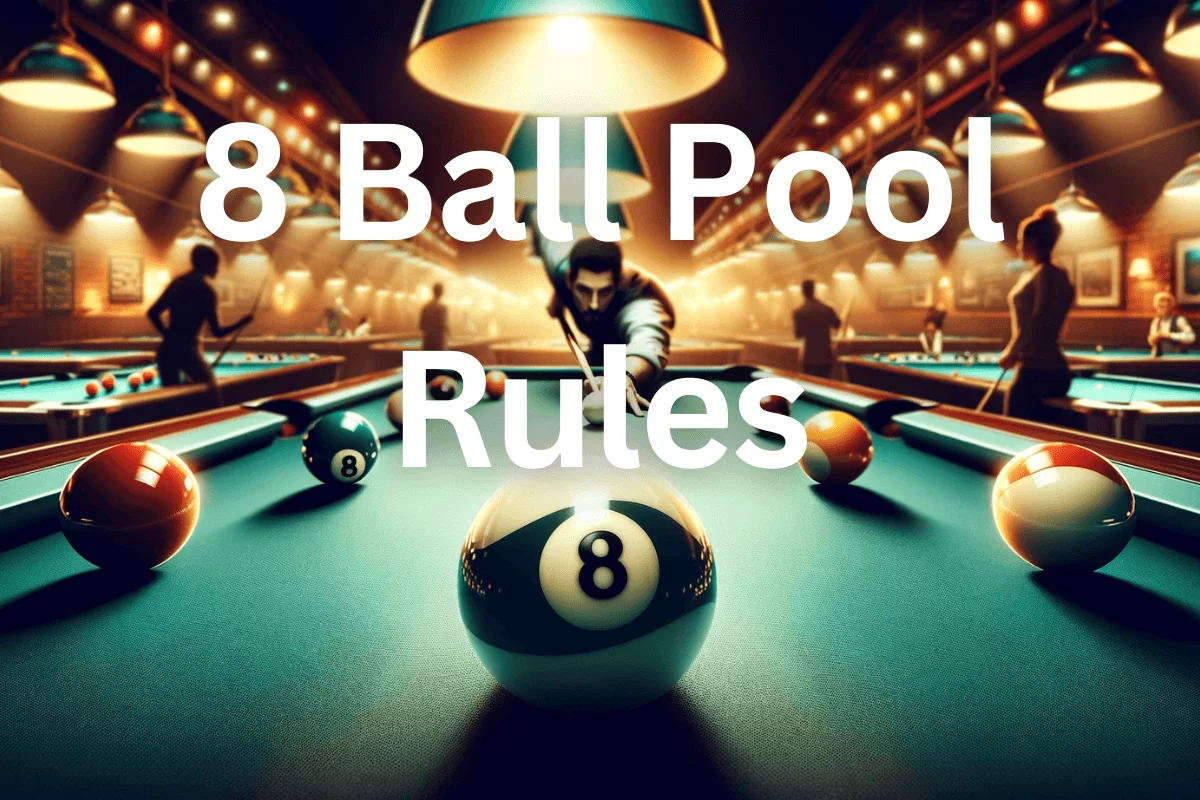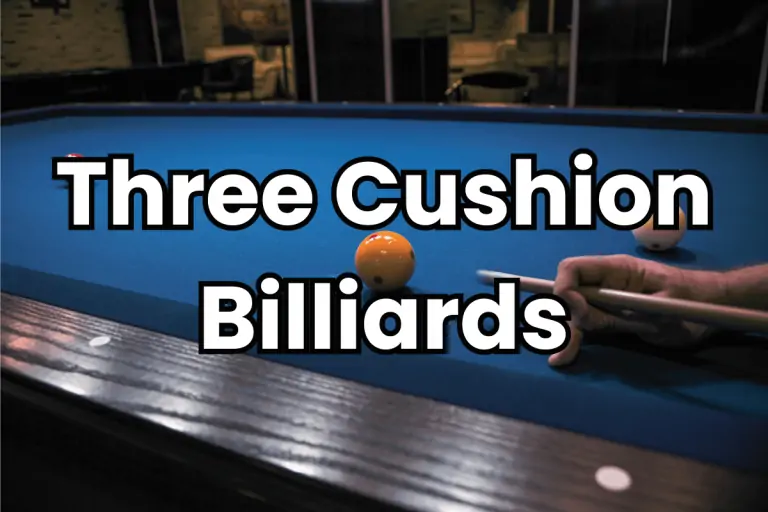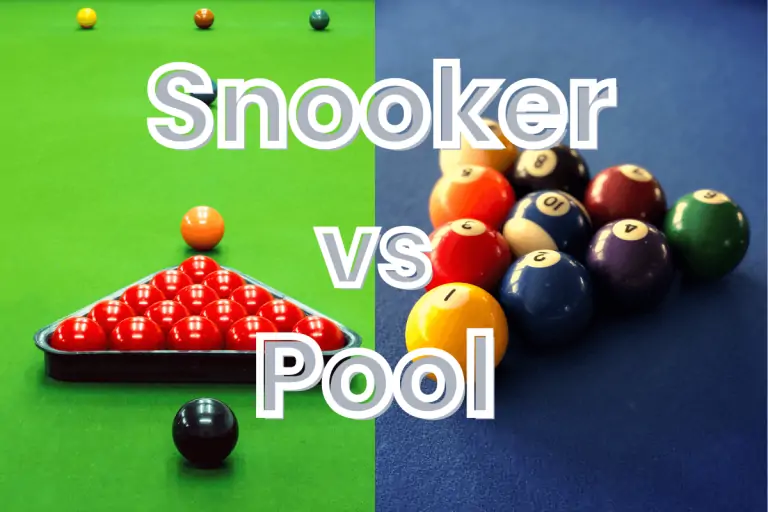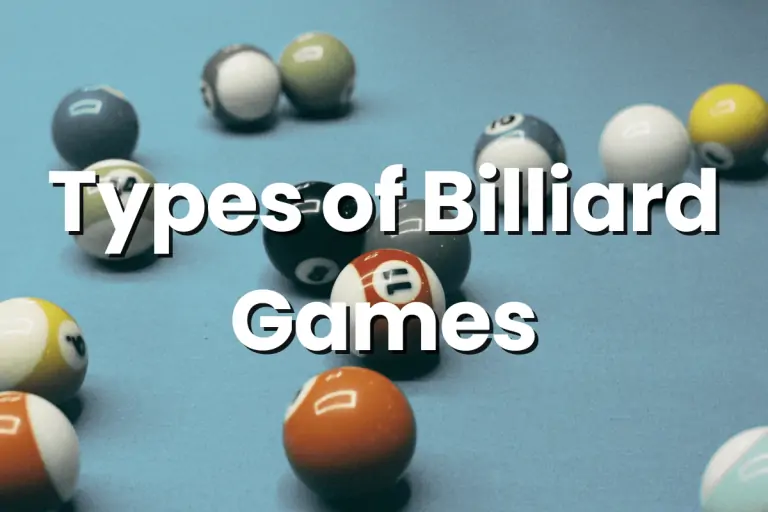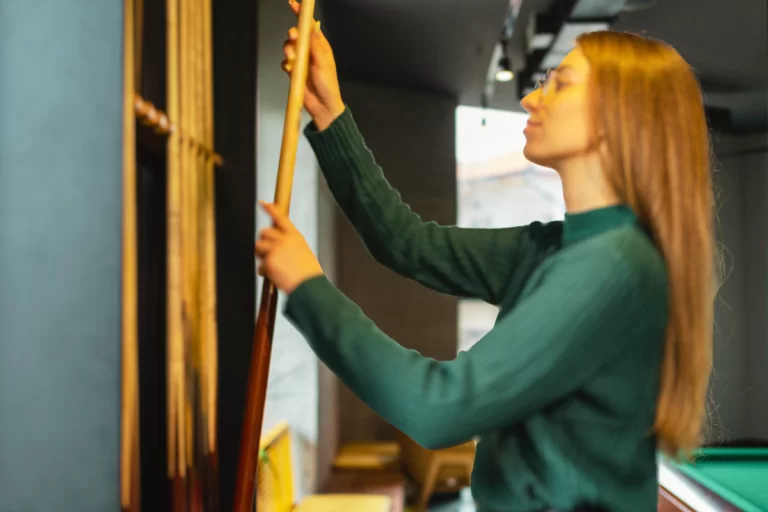The Definitive Guide to 8-Ball Pool Rules | Master the Game
Welcome to the world of 8-ball pool, a game beloved by millions for its exciting blend of skill, strategy, and a touch of luck. Whether you’re playing for fun with friends or competing in a tournament, knowing the 8-ball pool rules is key to enjoying the game to its fullest. Our guide is here to break down these rules in a simple, user-friendly way, sticking closely to the official standards set by the World Pool-Billiard Association. So, grab a cue, and let’s dive into the essentials of 8 ball pool rules to get you game-ready!
What is the 8-ball pool?
The 8-ball pool is the go-to game for pool players around the globe, a classic cue sport that turns a simple table into a battleground of strategy and skill. Picture this: 15 colorful balls, a cue stick, and a bit of chalk — that’s all you need for hours of fun. But where did this all start?
Let’s take a quick trip down memory lane. The roots of the 8-ball pool trace back to the early 1900s, evolving from a mix of billiards games. It was in the 1940s that the game, as we know it, really chalked up its name, with the World Pool-Billiard Association later standardizing the rules. This game has hustled its way from smoky bars and pool halls to online platforms, where it’s pocketed the hearts of millions today.
From friendly games in the rec room to intense global competitions, 8 Ball Pool is a game that’s easy to learn but can take a lifetime to master. So, whether you’re sinking balls in your basement or swiping on your phone, 8 Ball Pool’s rich history is part of every shot. Let’s chalk up and write our chapter in the ongoing story of 8 ball pool!
Equipment and Setup
Diving into the world of 8-ball pool, the first step is getting your equipment and setup right. After all, even the best players need the right tools and setup to show off their skills. Let’s break down what you need to get started.
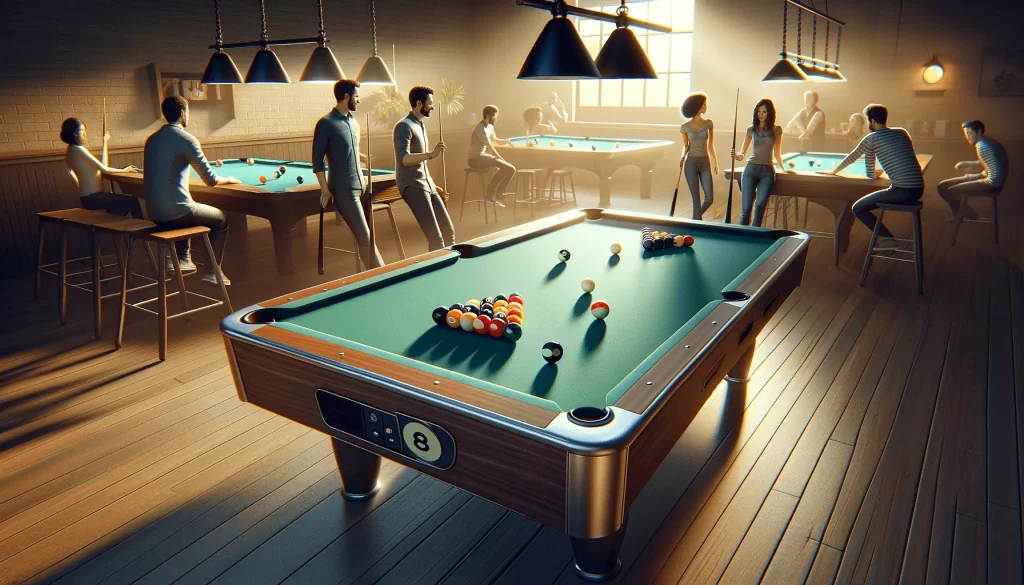
Standard Pool Table Dimensions and Equipment
A standard pool table is your battlefield. Typically, it measures 9 feet by 4.5 feet, though you might come across 7-foot tables in bars or homes.
But that’s not all. You need pool balls – a set of 15 object balls and a cue ball. The object balls are split into stripes (balls 9 to 15) and solids (balls 1 to 7), with the black 8 ball being the game decider.
Racking Up
You’ll use a triangle rack. Place the 8 ball at the center of the third row. The bottom corners should have a solid and a stripe (order doesn’t matter). Fill in the rest randomly, but make sure it’s a mix of stripes and solids. The apex ball goes on the foot spot – a marked spot on the table.
Choosing Your Cue Stick
Now, the cue stick – your sword in this game of skill. They typically range from 57 to 58 inches in length. As for weight, cues generally range from 17 to 21 ounces. Beginners might prefer a heavier cue for more stability, but as you develop your skills, a lighter cue offers more control and finesse.
The Break Rules in 8-Ball Pool
The break shot in the 8-ball pool isn’t just about whacking the cue ball into the racked balls; it’s a crucial move that can set the tone for the entire game.
Rules for a Legal Break
A legal break is crucial. If you foul on the break, your opponent could gain a significant advantage. Here are the essentials:
Contact: The cue ball must hit the racked balls.
Movement: At least four object balls must hit the cushions, or at least one object ball must be pocketed. If neither happens, it’s a foul.
Cue Ball Control: If you pocket the cue ball (‘scratch’) or it jumps off the table, it’s a foul. Your opponent will get the cue ball in hand, meaning they can place it anywhere behind the headstring.
The object of 8-Ball Pool
Understanding the main objective in an 8-ball pool is like knowing the key to unlock the game’s full excitement. Here’s a breakdown to get you right into the heart of this popular cue sport.
Main Objective
The ultimate goal in an 8-ball pool is simple yet challenging: pocket all of your designated balls, either stripes or solids and then legally pocket the 8-ball to win. It sounds straightforward, but the journey there is filled with strategy, skill, and a bit of good fortune.
Strategy Tips for Group Selection
Choosing your group wisely after the break can give you a significant edge:
Look for Clusters: Avoid choosing a group with many balls clustered together or blocked by the opponent’s balls.
Check for Open Shots: Select the group with the most accessible balls, giving you better chances for successful shots.
Plan Ahead: Consider the layout for future shots, especially how you might get to the 8 ball. Sometimes, the initial easiest shot isn’t the best strategic choice.
Control the Table: If you can’t clear your balls in one turn, try to leave the cue ball in a position that makes it hard for your opponent to make a shot.
How to Take a Legal Shot in 8-Ball Pool Rules
Taking a legal shot in an 8-ball pool is fundamental to playing the game correctly and fairly. Here’s how you can make sure each of your shots is by the book:
Strike Your Group First: Always hit a ball from your designated group first with the cue ball. If you’re playing stripes, hit a striped ball first, and if you’re playing solids, hit a solid ball first.
Clean Hit: Use only the cue stick’s tip to hit the cue ball. No other part of the stick or your hand should come into contact with the cue ball during a shot.
Ball Movement: After you strike one of your group’s balls, either one of the balls must hit a rail (side of the table), or any ball must be pocketed. If neither of these happens, it’s considered a foul.
Calling the Shot: In more formal or competitive settings, you may need to call your shot, which means you have to specify which ball you’re going to pocket and in which pocket. However, in casual play, this rule is often relaxed.
Understanding Fouls in 8-Ball Pool Rules
In 8 ball pool, fouls can turn the tide of the game. It’s crucial to know what counts as a foul, the consequences, and what to do if you or your opponent commits one.
What Constitutes a Foul
Wrong Ball First: Hitting an opponent’s ball before your own.
No Rail Contact: After hitting your ball, if no ball touches a rail and no ball is pocketed.
Cue Ball Mishaps: Pocketing the cue ball (a ‘scratch‘) or knocking it off the table.
Bad Hit: Hitting the cue ball with anything other than the cue tip.
Jump Shots and Double Hits: Making the cue ball jump over another ball or hitting the cue ball twice in one stroke.
Consequences of a Foul
Ball in Hand for Opponent: Your opponent gets to place the cue ball anywhere on the table and play their shot.
End of Your Turn: Committing a foul immediately ends your turn, even if you pocketed a ball during the shot.
Winning the Game in 8-Ball Pool Rules
In an 8-ball pool, the path to victory involves more than just sinking balls into pockets; it’s about strategic play and a keen understanding of the game’s end goal. Here’s how you can clinch the win:
Clear Your Group: First, you must pocket all the balls in your assigned group – either stripes or solids. It’s not just about hitting them in; it’s about planning your shots to smoothly transition from one ball to the next.
Pocket the 8-Ball: After all your group balls are pocketed, the 8-ball becomes your target. This is where the game gets tense. You must call the pocket where you intend to sink the 8-ball. This means verbally indicating or pointing to the pocket you plan to shoot the 8-ball into. If you successfully pocket the 8-ball in the called pocket without committing a foul, you win the game!
Avoid Fouls on the 8-Ball: Be cautious! If you pocket the 8-ball but commit a foul (like pocketing the 8-ball in the wrong pocket or pocketing the cue ball), you lose the game. Also, if you pocket the 8-ball before clearing your group of balls, you lose.
Conclusion
As we conclude our journey through the world of 8-ball pool Rules, remember the essentials: understanding equipment and setup, mastering the break, knowing the object of the game, taking legal shots, recognizing fouls, and the path to victory. Practice is key to mastering these elements. Apply these rules in your gameplay, and don’t be afraid to learn from each shot, whether it lands or misses. Keep refining your skills, embrace the continuous learning curve, and most importantly, enjoy every moment at the table. Happy cueing!
FAQs
Can I choose stripes or solids before the break?
No, the table is considered ‘open’ until a player pockets a ball on a legal shot after the break. Only then can you choose stripes or solids based on the type of ball pocketed.
What happens if I pocket the cue ball (‘scratch’) on the break?
If you scratch on the break, it’s a foul. Your opponent gets the cue ball in hand, which means they can place it anywhere behind the headstring for their shot.
Is it a foul if I hit my opponent’s ball first, even if I pocket my own ball?
Yes, it’s a foul. You must always hit one of your own group’s balls first. Hitting the opponent’s ball first, even if you pocket your own, is considered a foul.
Can I use the 8 ball to sink one of my own group’s balls?
No, you cannot legally use the 8 ball to pocket one of your balls. The 8-ball should only be played directly for the winning shot.
What happens if I pocket the 8 ball and the cue ball on the winning shot?
If you pocket both the 8 ball and the cue ball on what would be the winning shot, it is considered a foul and you lose the game.
Do I have to call my shot in 8-ball pool?
In most casual play, calling shots is not required, except for the 8 ball. However, in tournament or league play, players may be required to call both the ball and the pocket.

